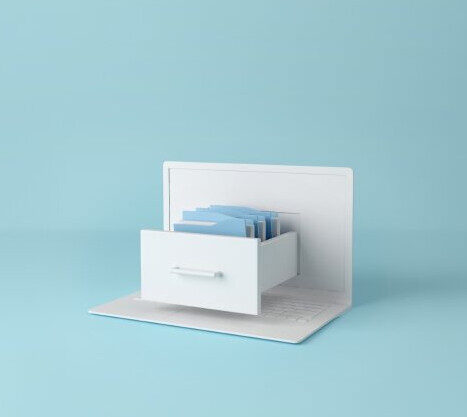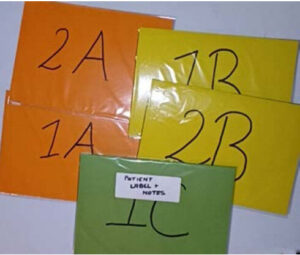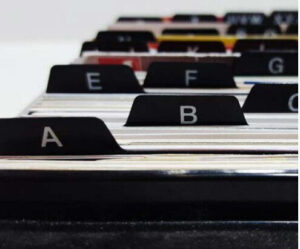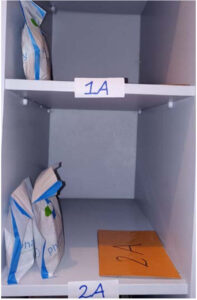Home » Prescription filing and collection system

In a busy pharmacy, prescription collection shelves can quickly become overcrowded with uncollected medication bags, creating an added burden for staff. Searching through overflowing shelves for prescriptions that have been left uncollected can be time-consuming, frustrating and increase the risk of the wrong medication being handed out. However, implementing a well-structured filing system can significantly streamline the process, reduce clutter, improve efficiency, and minimise the risks associated with a disorganised collection area.
As outlined in our previous article on filing paper prescriptions (‘Alphanumeric filing system for prescriptions in a pharmacy’, IPU Review, May 2024), an alpha-numeric filing system is a method of organising based on a combination of letters and numbers. It’s a balance of the straightforwardness of alphabetical systems and the specificity of numerical systems.
In the context of a pharmacy prepared prescription filing system, this means arranging prepared prescriptions on a shelf with alpha-numeric labels that match to a corresponding card in a filing drawer.
There are many benefits to a such a filing system:
Label each shelf or drawer from top to bottom with an alpha-numeric label (shelf 1: 1A, 1B, 1C; shelf 2: 2A 2B, 2C; shelf 3: 3A, 3B, 3C, etc). Create matching label cards that will sit on the shelf (see Image 1). You can create a few per space depending on the bag size of the prepared prescriptions, for example, if three small bags will fit on the shelf under 1A, create three cards with 1A on them. Cards should also be prepared and labelled as ‘fridge’ and ‘CD safe’ for items that require strict storage requirements.

This can either be a dedicated built-in drawer or external to the shelving system (see Image 2). Cards should be labelled A-Z and will correspond to patient surnames. The cards that are on your shelves should be able to fit in this filing system.

The system is now ready to use. Print an extra bag label for prepared prescriptions where the patient is calling back. Choose any place on your shelves that can accommodate the bag (this does not have to correspond to the first letter of their surname). Take a card corresponding to the shelf number (see Image 3), place the second bag label on the card and place this card in the alphabetical filing system. You can also stick any appropriate notes to this for when the patient comes back, for example, call pharmacist, owing an item, prescription finished.

When the patient arrives to collect their prescription, a staff member should check the alphabetical filling system for the patient’s name and go to the corresponding shelf to find the prepared prescription. All labels on the card should be removed and disposed of appropriately, and then the card can be returned to the shelf.
Once implemented, the filing system should be checked regularly to ensure there are no uncollected prescriptions, in particular at the end of the month before your claims are submitted.
To help ensure there are no uncollected prescriptions, there is the option to colour code, using coloured stickers or markers, weekly prepared prescriptions. For example:
This will allow you to see at a glance if weekly prepared prescriptions have been collected.
Having used this system, I have found it to be highly efficient, easy to implement, and simple for staff to follow. It streamlines prescription retrieval, reduces errors, and enhances overall organisation. Its structured approach improves workflow management, making it one of the most effective systems for prepared prescription storage in a busy pharmacy setting.
Linda Ahern

Claims Analyst, IPU
Highlighted Articles